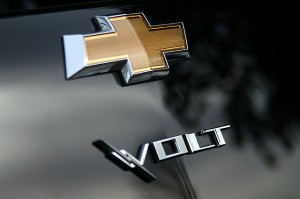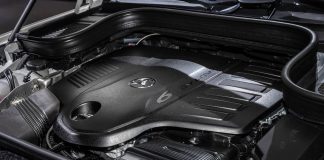Here’s the latest reader question, along with my reply!
Scott writes: I found your suggestion a good one and am going to look at a Chevy Volt. I inherited a subscription to Consumer Reports and in their April 2020 issue they put the Volt in the “best used car” category. (As an LRC reader CR is a little creepy to me.)
So the main benefit over other plug-in-hybrids is that it stays in battery only mode for the first ~50 miles and then the generator/engine kicks on? So I anticipate shopping for one that is a few years old. Any thoughts on the advantage of low mileage (to keep as many years as possible before batteries decline) and newer models that have more Uncle Sam driving along with you?
My reply: There are several benefits! The first is that the Volt is capable of operating entirely on battery power much farther – and much faster – than any other hybrid on the market. Around 50 miles – and at highway speeds. Only a few (plug-in) hybrids can be driven for any significant distance at normal speeds on just the battery and even then the distance they can go is in the 10-12 mile ballpark. Regular hybrids can creep at near walking speeds for a mile or so on the battery.
The advantage here is clear. If your trip is within the Volt’s 50 mile range on battery power you can easily get away with burning no gas at all, possibly for weeks. Even if your trip is farther, you’ll still only be burning gas for the portion that isn’t covered by the battery’s range.
Over time, this can save you a lot of money as charging the Volt is cheaper than filling the tank.
But it also saves you time because the Volt doesn’t have to stop when it runs out of charge – like every other electric car. Instead, it recharges itself as you drive – something no other electric car can do. 
There are also probable additional benefits. One is that because the Volt’s gas engine is lightly used, relative to a conventional car’s engine, it will probably last a very long time. And because the Volt’s battery pack never experiences the heavy discharge/charge cycling of a conventional electric car it will probably last longer than a conventional EV battery pack.
This car is the best hybrid ever put on the road and by far the best electric car.
As far as Uncle: The Volt is – surprisingly – less Big Brothery than other GM vehicles of its vintage (2019 is the last year) and vastly more so than a Tesla, which is tethered to the Tesla hive mind. It has some of the usual annoying buzzers and lights but these can be turned off pretty easily.
I think you’ll be very happy with it!
. . .
Got a question about cars, Libertarian politics – or anything else? Click on the “ask Eric” link and send ’em in!
If you like what you’ve found here please consider supporting EPautos.
We depend on you to keep the wheels turning!
Our donate button is here.
If you prefer not to use PayPal, our mailing address is:
EPautos
721 Hummingbird Lane SE
Copper Hill, VA 24079
PS: Get an EPautos magnet or sticker or coaster in return for a $20 or more one-time donation or a $10 or more monthly recurring donation. (Please be sure to tell us you want a magnet or sticker or coaster – and also, provide an address, so we know where to mail the thing!)
If you’d like an ear tag – custom made! – just ask and it will be delivered.
My latest eBook is also available for your favorite price – free! Click here. If that fails, email me at EPeters952@yahoo.com and I will send you a copy directly!











Hi Scott,
“Any thoughts on the advantage of low mileage (to keep as many years as possible before batteries decline) and newer models that have more Uncle Sam driving along with you?”
I bought a pristine 2013 Volt, with 106,000 miles on the OD last year for less than $7,000.00. So far, it’s been fantastic. With my mix of driving I average about 150MPG and need to fill up about once every three months. The car is also surprisingly fun to drive. Anyway, assessing total mileage is different for the Volt vs. a conventional ICE or standard hybrid. You’ll want to determine the lifetime MPG, which is shown on the main display; this gives you an idea of how the car was driven. Lifetime MPG of my Volt was 83 when I purchased it. This means that the previous driver maintained a mix of about 45% gas and 55% electric, likely including a high proportion of highway miles. So, the battery had about 58,000 miles of use, the ICE about 48,000 miles of use. So far, my Volt shows little or no battery degradation. In the winter I average about 33 miles of pure electric and, in the summer, about 41. The first gen Volt is rated at 38 miles of EV range and 36 MPG. I strongly recommend the car.
Cheers,
Jeremy
Eric,
I think that the ICE would last a long time because it runs at constant RPM under constant load, since it’s used for electricity generation, not propulsion.
Only thing is….when something breaks on the Volt….it’s uber-expensive to fix- and not something you can just take to your local independent trusted mechanic. Conceptually, the Volt is the only Hybrid that makes sense…..but when it starts having trouble with that Atkinson-cycle engine, or the generator, or the electronics/software that control everything…good luck with that.
Morning, Nunz,
That’s true, of course. But it’s also true generally of modern cars, regardless of type. I made the point yesterday to my girlfriend, who isn’t car hip. I’ve been rebuilding a spare Quadrajet my buddy the mechanic gave me – it was “donated” by a customer who owned a ’78 Trans-Am and had him (my teeth begin to ache) remove it, along with the original intake manifold, and replace them with an aftermarket intake (not inexcusable) and a Holley (my teeth really ache now). The owner did not want the QJet or the original intake – both from a W72/400 car, so highly desirable and now pretty rare – so my mechanic buddy, knowing I am a High Priest of the Church of Pontiac – gave both to me for safekeeping.
Anyhow, I had the carb on my bench – mostly re-assembled – and she asked me what I was doing. I told her – and then explained that this single, stand-alone device constituted almost the entirety of the “fuel system” of the car it came from. Four bolts hold it on the manifold; a couple of minor connections to decouple and it’s easily removed from the car, presto. That it was rebuildable – which was what I was in the middle of doing – for less than $100 in parts and then good as new even though it is 42 years old.
Then I told her that every modern car with port fuel injection has an electronic injector for each cylinder, a fuel rail, multiple sensors and the wiring/harnesses that feed data back to an ECU (computer) plus an electric fuel pump in the gas tank, none of these components rebuildable and most of them individually costing more for a new replacement part than either the carburetor rebuild kit or even a replacement brand-new carburetor, should that be necessary.
I also told her that, yes, the modern system will usually “just work” – and for longer – without requiring the vehicle’s owner to do anything but drive the thing. But, the catch is that the day will come when it does not work – and then it will probably be expensive to fix and require someone else to fix it. Also that, fundamentally, the modern car is much more a throw-away because of the increasing cost of repairs over time vs. the decreasing value of the vehicle itself; that it is a no-brainer to spend $100 or even $400 to rebuild/replace a carburetor – and literally bring the entire fuel system to as new condition – in a car that’s worth $2,500 and quite another thing to spend $2,500 to replace croaked EFI system components on a modern high-mileage car that’s worth $2,500.
WHAT??? Replace a Rochester QJ with a Holley? I’m no GM cognoscenti, but even I know that is just flat wrong! No 4-barrel Holley can do better than a QJ (or Carter AFB), in my lowly opinion, and you’ve usually got to bend every “adjustable” linkage in sight to get the blasted thing to behave anyway. Man, what is the world coming to?
Now, if you were going from a QJ to Tri-Power, that is a different animal 🙂
Hi Mark,
The ICE does not run at a constant RPM, it varies depending on load and drive mode. The car has four drive modes, normal, sport, hold and mountain. Normal and sport drain the battery to “empty” (battery won’t drain beneath about 35% of total capacity) before the ICE kicks on. Hold maintains the level of charge when hold is selected, Mountain either charges the battery up to about 50% of usable capacity and then maintains it, or lets the battery drain to about 50% of usable capacity, and then maintains it. So, in hold and mountain mode, the ICE is providing electricity for the motor and to charge the battery. In sport and normal, it only provides electricity for the motor. Under high load, like sustained climbing, the ICE will run at higher RPM’s, even in normal or sport mode.
Cheers,
Jeremy
Even so, I doubt it would see the RPM and load variation that a regular ICEV would see in normal use.
Hi Mark,
You are correct, the RPM’s do seem to get pretty high at times, but not often. Also the load on the engine must always be much lower than in an ICE or standard hybrid as it almost never provides any propulsion force.
Cheers,
Jeremy